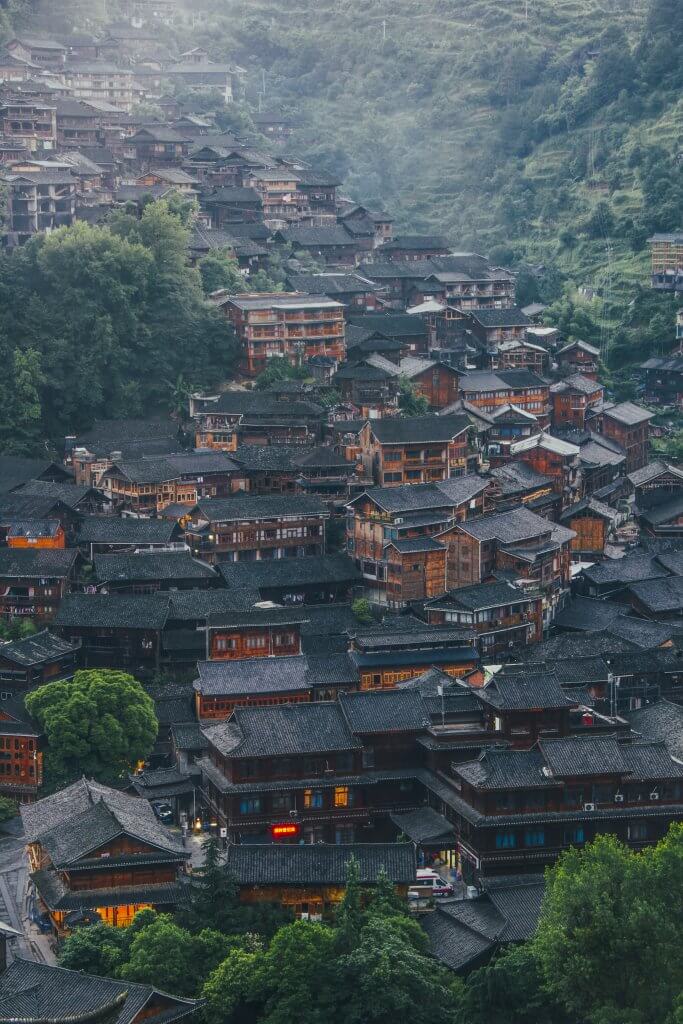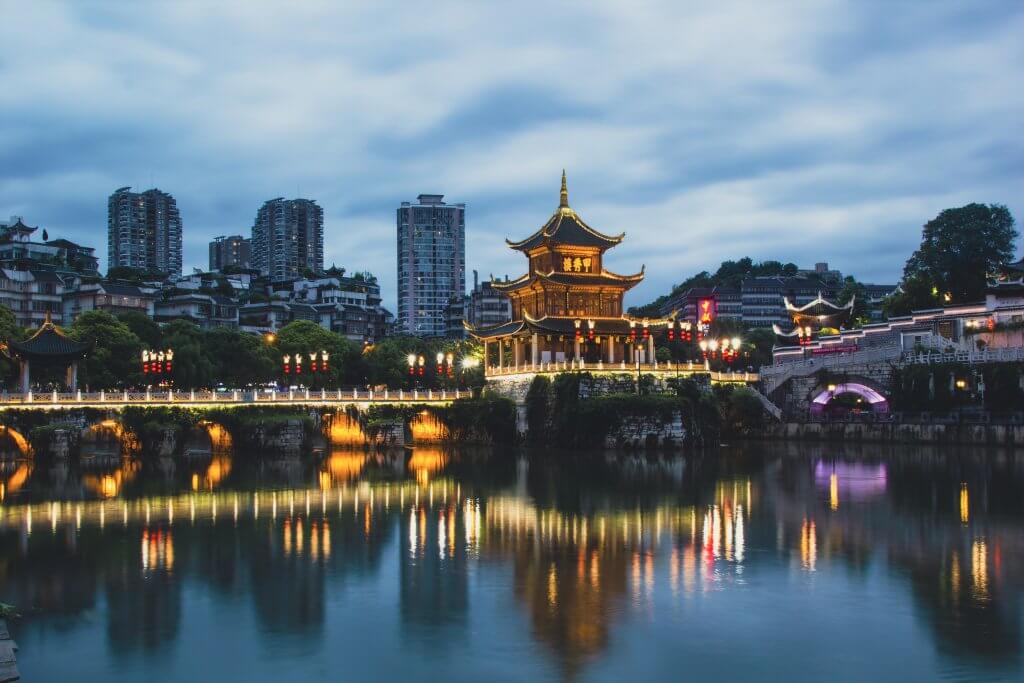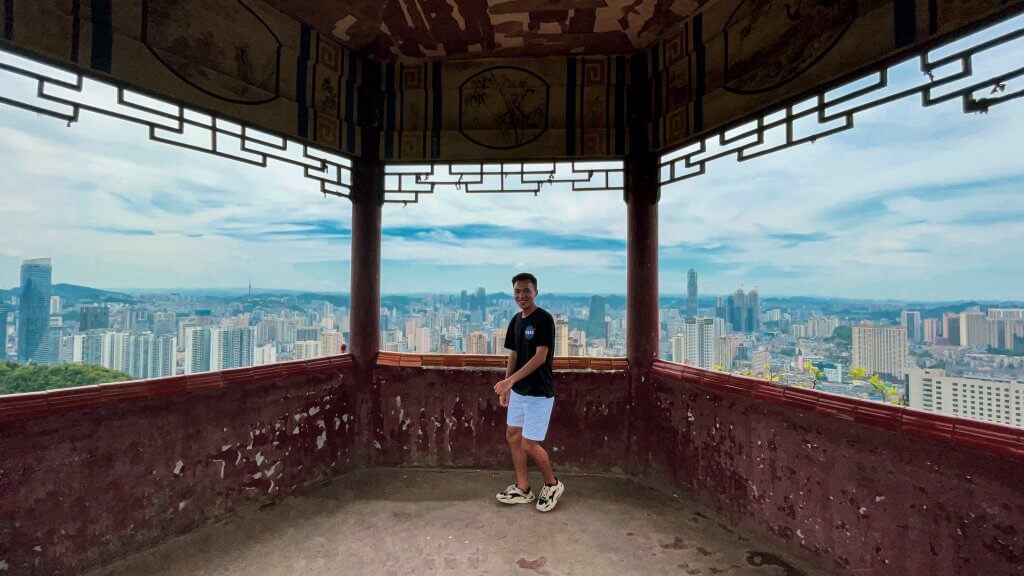在中国西南部的贵州省,隐藏着一片被葱郁山林和多彩民族文化点缀的神秘地带。这次的背包旅行,我决定深入探索黄果树瀑布和一个典型的苗族寨子,以亲身体验这里的自然美景和丰富的民族传统。
In the southwestern province of Guizhou, China, there lies a hidden gem adorned with lush forests and vibrant ethnic cultures. On this backpacking trip, I decided to delve deep into the wonders of Huangguoshu Waterfall and a typical Miao village to personally experience the natural beauty and rich cultural traditions of the area.
Huangguoshu Waterfall 黄果树瀑布:

一早,我从贵阳出发,乘坐当地的长途汽车前往安顺,然后换乘前往黄果树瀑布的班车。蜿蜒的山路两旁,茂密的树木和时不时掠过的小村庄让旅途充满期待。到达黄果树瀑布的入口后,我买了门票,步入了这个世界著名的瀑布景区。
Early in the morning, I set out from Guiyang and took a long-distance bus to Anshun, followed by a shuttle bus to Huangguoshu Waterfall. The winding mountain roads, flanked by dense trees and the occasional small village, filled the journey with anticipation. Upon reaching the entrance of Huangguoshu, one of the world’s renowned waterfalls, I bought a ticket and entered the scenic area.
黄果树瀑布是中国最大的瀑布之一,总宽101米,高度达到了77.8米。当我站在观景台上,只见白水如银河倾泻而下,溅起层层水雾,阳光透过水雾形成一道道绚丽的彩虹。我顺着栈道往下走,每一个角度都有不同的惊喜,瀑布的壮观景致让我久久驻足,不愿离开。
Huangguoshu Waterfall is one of the largest waterfalls in China, with a width of 101 meters and a height of 77.8 meters. Standing on the viewing platform, I watched as the water cascaded down like a milky way, creating layers of mist and forming dazzling rainbows in the sunlight. As I walked down the path, each viewpoint offered a new surprise, and the spectacular sight of the waterfall made me linger for a long time, unwilling to leave.
Miao Village 苗寨:

离开黄果树瀑布,我前往附近的苗族寨子。苗族是中国的一个古老民族,以其独特的服饰和习俗而闻名。我选择了一个相对不那么商业化的村寨,希望能更真实地体验当地生活。
After leaving Huangguoshu, I headed to a nearby Miao village. The Miao are an ancient ethnic group in China, known for their distinctive attire and customs. I chose a less commercialized village, hoping for a more authentic experience of local life.
到达苗寨的那一刻,我就被这里的宁静和美丽深深吸引。苗寨建筑多为木结构,错落有致地建在山坡上。村里的老人们坐在家门口编织,小孩在巷道里追逐嬉戏,一派和谐的田园景象。在一位热情的苗族阿婆的邀请下,我参与了当地的午餐。餐桌上摆满了用本地食材烹制的菜肴,如苗家酸汤鱼、糟辣椒和手工酸笋等,每一道都是独特的风味。

The moment I arrived at the Miao village, I was deeply attracted by its tranquility and beauty. The village buildings, mostly wooden structures, were beautifully arranged on the hillside. Elderly residents sat at their doorsteps weaving, while children played in the alleys, creating a harmonious pastoral scene. Invited by a hospitable Miao grandmother, I joined in a local lunch, which featured dishes made from local ingredients such as Miao sour soup fish, fermented chili, and handmade pickled bamboo shoots, each with a unique flavor.
晚上,寨子里举行了一场苗族的传统舞蹈表演。舞者们身着五彩斑斓的民族服装,随着悠扬的苗族笙歌跳起舞来,那种原始的节奏和动感让每一个观众都不由自主地拍手叫好。我也被邀请参与到舞蹈中,感受到了苗族文化的热情与包容。
In the evening, the village hosted a traditional Miao dance performance. The dancers, dressed in colorful ethnic costumes, moved gracefully to the melodious Miao songs, their primal rhythms and movements eliciting spontaneous applause from every spectator. I was also invited to join the dance, experiencing the warmth and inclusiveness of Miao culture.
Return to Guiyang: 贵阳

在探访了黄果树瀑布和苗族寨子后,我回到了贵州省的省会——贵阳市。贵阳,作为一座正在快速发展的城市,不仅保留了传统的风味,同时也展示了现代化的活力。
After visiting Huangguoshu Waterfall and the Miao village, I returned to Guiyang, the provincial capital of Guizhou. Guiyang, a city undergoing rapid development, not only retains its traditional flavors but also displays a vibrant modernity.

首先,我前往了贵阳的黔灵山,这里是贵阳非常著名的旅游景点之一。公园内绿树成荫,花香四溢,溪水潺潺,非常适合散步和放松。在公园内,有许多的猴子,时不时向游客讨要食物,你可千万别在他们面前吃东西,否则你的包可能都会被整个抢走。
First, I visited Qianling Mountain Park in Guiyang, a famous tourist spot in the city. The park, filled with lush trees and fragrant flowers, with babbling brooks, was ideal for walking and relaxing. Among the park’s attractions were numerous monkeys that occasionally approached tourists for food—a cautionary tale against eating in front of them lest your belongings be snatched away.
在贵阳,不可错过的就是尝试当地的美食。我特别去了当地人推荐的一家老店,尝试了贵阳的特色小吃——肠旺面。这是一种将豆腐、血旺、酸菜和辣椒完美结合的面食,味道既鲜又辣,非常开胃。此外,我还品尝了贵阳的花溪牛肉米线,汤料十分咸香,十分独特。
In Guiyang, exploring local cuisine is a must. I visited an old eatery recommended by locals and tried Guiyang’s signature dish, “Changwang Noodle.” This dish, a perfect blend of tofu, blood curd, pickled vegetables, and chili, was both fresh and spicy, incredibly appetizing. Additionally, I sampled Guiyang’s Huaxi beef rice noodle soup, noted for its salty and aromatic broth, a truly distinctive flavor.

